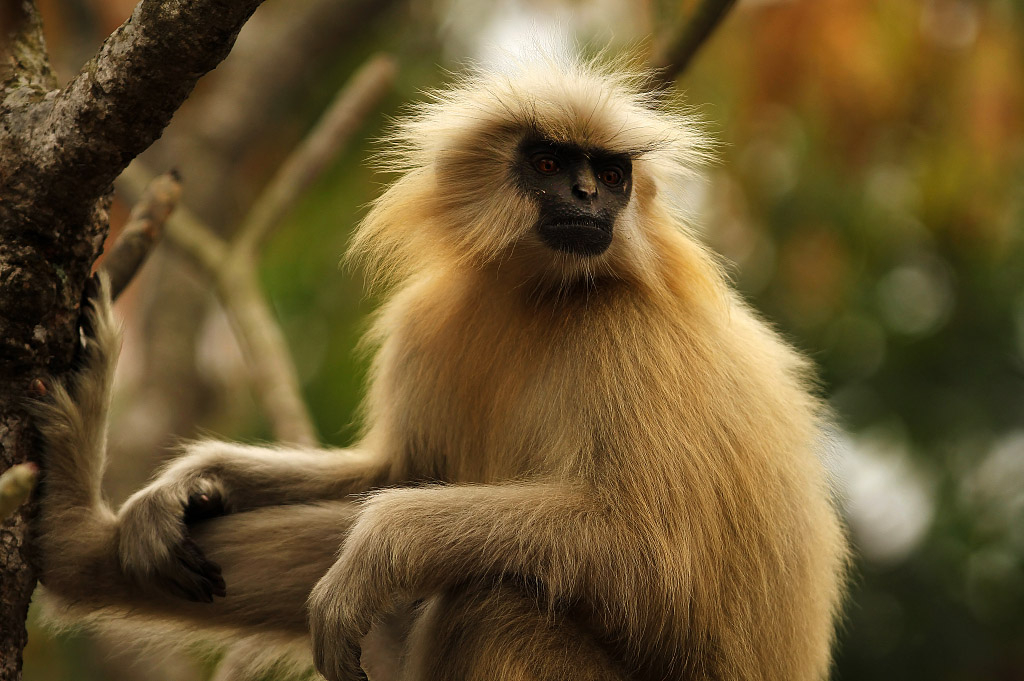When a slash of vibrant golden orange appears in the canopies of the dense forests in India and Bhutan, you encounter one of the most endangered primates in the world -- the Gee's golden langur.
It has stunning golden coat as its name suggests. However, it is only gold during breeding season, and has dirty creamy white coat for the rest of the time. Its ventral color is lighter than that of the rest of the body, and the females usually have a fur that is brighter than that of the males. Unlike the adults, the youngsters are almost pure white in color.
Because it was only recently discovered in 1953, and also because it's a very shy animal, this species hasn't been studied much. However, it has been observed that the Gee's golden langur only gives birth to one offspring at a time, and its breeding season lasts from June to January.
According to IUCN's Red List of Threatened Species, there are only around 6,500 Gee's golden langur left in the wild. They are threatened by habitat fragmentation, especially in India, where they are distributed across an area of over 2,500 square kilometers, and only less than half of these areas are suitable for habitation. In Bhutan. they face a better situation, as 50 percent of their natural habitat is in protected areas such as nature reserves and wildlife sanctuaries.
Moreover, as human activities in forests increases, golden langur deaths are more frequently related to electrocution and road accidents, and they are increasingly attacked by dogs.

As the most common primate on Earth, homo sapiens share the same order with other 512 species across 93 countries. Non-human primates are our closest relatives on this planet. They play a significant role in various types of ecosystems, from the mysterious tropical forests to the grand African savannas, their intelligence is fascinating and sheds light into studies of human society and behaviors.
However, many species of primates are on the brink of extinction. The series "Primates in jeopardy" is based on the list "World's 25 Most Endangered Primates (2018-2020)" co-published by IUCN SSC Primate Specialist Group (PSG), International Primatological Society (IPS), Global Wildlife Conservation (GWC) and Bristol Zoological Society (BZS).
This is the tenth iteration of a biennial listing of a consensus of the 25 primate species considered to be among the most endangered worldwide and the most in need of conservation measures.
(All photos via VCG, cover image designed by CGTN's Chen Yuyang.)
(If you want to contribute and have specific expertise, please contact us at nature@cgtn.com)